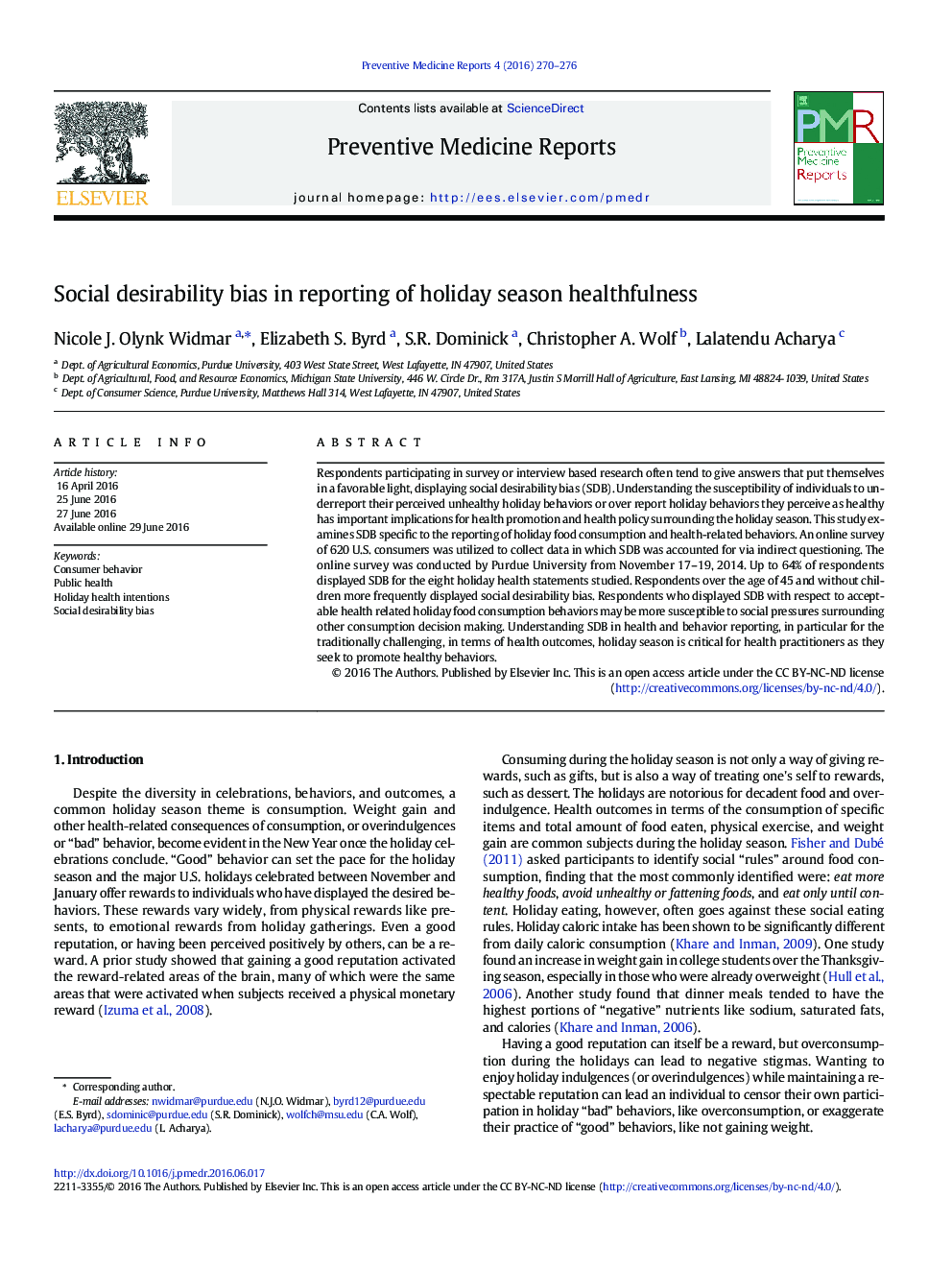| Article ID | Journal | Published Year | Pages | File Type |
|---|---|---|---|---|
| 4202271 | Preventive Medicine Reports | 2016 | 7 Pages |
•Social desirability bias in reporting holiday season behavior is analyzed.•Up to 64% of respondents displayed social desirability bias.•Older respondents more frequently displayed social desirability bias.•Respondents without children more frequently displayed social desirability bias.
Respondents participating in survey or interview based research often tend to give answers that put themselves in a favorable light, displaying social desirability bias (SDB). Understanding the susceptibility of individuals to underreport their perceived unhealthy holiday behaviors or over report holiday behaviors they perceive as healthy has important implications for health promotion and health policy surrounding the holiday season. This study examines SDB specific to the reporting of holiday food consumption and health-related behaviors. An online survey of 620 U.S. consumers was utilized to collect data in which SDB was accounted for via indirect questioning. The online survey was conducted by Purdue University from November 17–19, 2014. Up to 64% of respondents displayed SDB for the eight holiday health statements studied. Respondents over the age of 45 and without children more frequently displayed social desirability bias. Respondents who displayed SDB with respect to acceptable health related holiday food consumption behaviors may be more susceptible to social pressures surrounding other consumption decision making. Understanding SDB in health and behavior reporting, in particular for the traditionally challenging, in terms of health outcomes, holiday season is critical for health practitioners as they seek to promote healthy behaviors.
